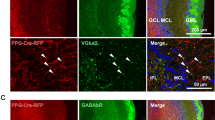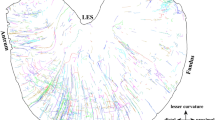Abstract
INVESTIGATIONS of the innervation of the eel pituitary with the light microscope demonstrated in the pars distalis a few nerve fibres which stained with the Gomori technique and many others which did not1. The latter, which appeared to originate in the nucleus lateralis tuberis, do not seem to stain with any of the common ‘neurosecretory’ stains2, and therefore under the light microscope the degree of neurosecretory control of the pars distalis appears to be slight.
This is a preview of subscription content, access via your institution
Access options
Subscribe to this journal
Receive 51 print issues and online access
$199.00 per year
only $3.90 per issue
Buy this article
- Purchase on Springer Link
- Instant access to full article PDF
Prices may be subject to local taxes which are calculated during checkout
Similar content being viewed by others
References
Bargmann, W., Z. Zellforsch., 38, 285 (1953).
Knowles, Sir F., and Vollrath, L., Z. Zellforsch., 69, 474 (1966).
Knowles, Sir F., Phil. Trans. Roy. Soc., B, 249, 435 (1965).
Bern, H. A., and Knowles, Sir F., in Neuroendocrinology, edit. by Martini, L., and Ganong, W. F. (Academic Press, New York, 1966).
Author information
Authors and Affiliations
Rights and permissions
About this article
Cite this article
KNOWLES, F., VOLLRATH, L. A Dual Neurosecretory Innervation of the Pars Distalis of the Pituitary of the Eel. Nature 208, 1343–1344 (1965). https://doi.org/10.1038/2081343b0
Published:
Issue Date:
DOI: https://doi.org/10.1038/2081343b0
Comments
By submitting a comment you agree to abide by our Terms and Community Guidelines. If you find something abusive or that does not comply with our terms or guidelines please flag it as inappropriate.



